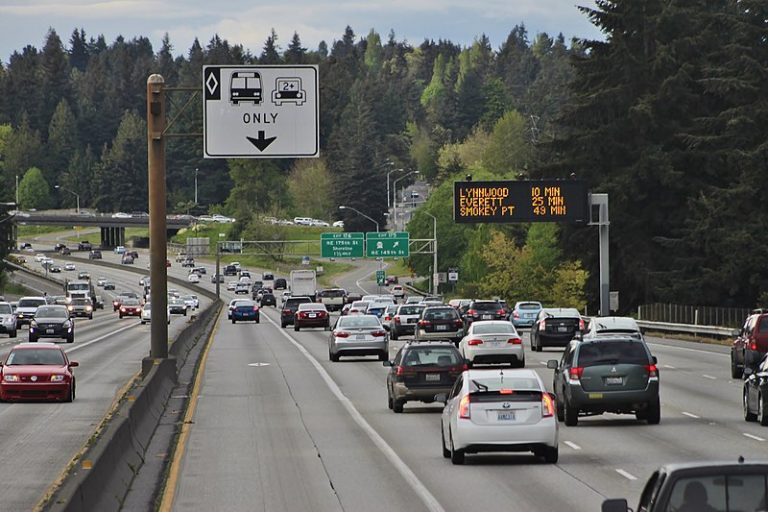Published on November 5, 2019

A recent study sought to discover how toll lanes like the ones implemented on Washington’s 405 freeway affect low-income communities. And while those communities are the ones who most often can’t afford the toll lanes, one expert argues that they benefit everyone.
“(Drivers) are voluntarily choosing to subsidize the operation and the construction and the maintenance of (tolling lanes) for other people,” Washington State Transportation Center Director Mark Hallenbeck says. “From an equity perspective, that’s a really good thing.”
The study — lead by Hallenbeck and a team of student fellows at the University of Washington — came to a few conclusions. First, that high income households use the I-405 toll lanes more often, but low-income communities pay higher tolls.
That’s driven by the fact that lower-income communities travel more during peak periods, when tolls are higher. Those same communities also don’t use the lanes as frequently, comprised primarily of one-time users over the course of 2018.
Despite paying more and using the lanes more infrequently, Hallenbeck argues that low-income communities still benefit overall in terms of saving time on their trips.
“There are days when even though they don’t have nearly as much money as other people do, they see it in their financial interest to buy in to a better trip,” he described. “The fact that they don’t do it very often make sense because they don’t have as much money. But they actually gained more per trip in terms of travel time savings than people who actually have higher incomes.”
Basically, low-income drivers don’t benefit as often from the toll lanes, but they still save more time per trip.
Continue reading at KIRO Radio.
Originally broadcast on the Candy, Mike and Todd Show on KIRO Radio.